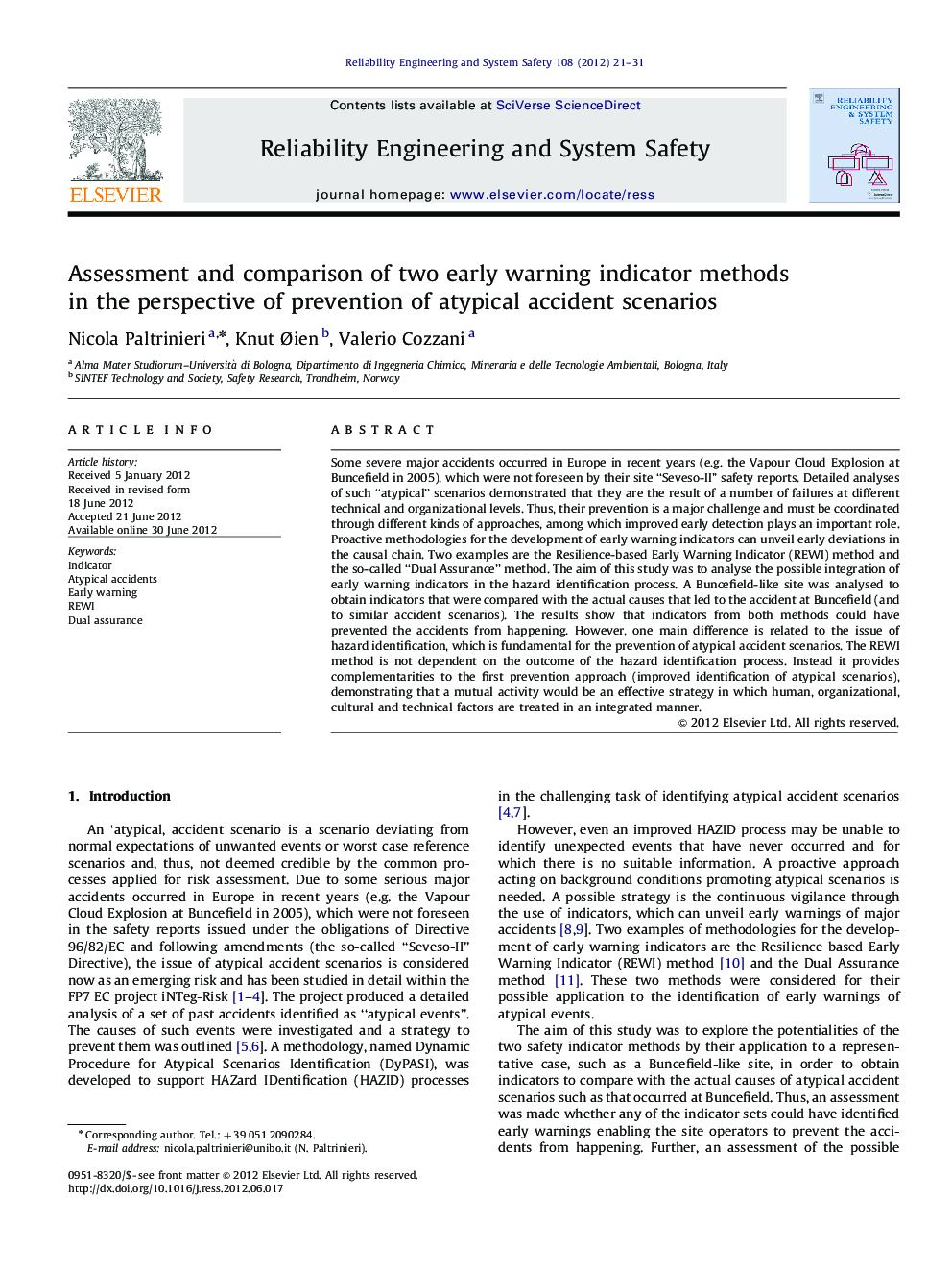| Article ID | Journal | Published Year | Pages | File Type |
|---|---|---|---|---|
| 805714 | Reliability Engineering & System Safety | 2012 | 11 Pages |
Some severe major accidents occurred in Europe in recent years (e.g. the Vapour Cloud Explosion at Buncefield in 2005), which were not foreseen by their site “Seveso-II” safety reports. Detailed analyses of such “atypical” scenarios demonstrated that they are the result of a number of failures at different technical and organizational levels. Thus, their prevention is a major challenge and must be coordinated through different kinds of approaches, among which improved early detection plays an important role. Proactive methodologies for the development of early warning indicators can unveil early deviations in the causal chain. Two examples are the Resilience-based Early Warning Indicator (REWI) method and the so-called “Dual Assurance” method. The aim of this study was to analyse the possible integration of early warning indicators in the hazard identification process. A Buncefield-like site was analysed to obtain indicators that were compared with the actual causes that led to the accident at Buncefield (and to similar accident scenarios). The results show that indicators from both methods could have prevented the accidents from happening. However, one main difference is related to the issue of hazard identification, which is fundamental for the prevention of atypical accident scenarios. The REWI method is not dependent on the outcome of the hazard identification process. Instead it provides complementarities to the first prevention approach (improved identification of atypical scenarios), demonstrating that a mutual activity would be an effective strategy in which human, organizational, cultural and technical factors are treated in an integrated manner.
► Early warning indicators were created through 2 methods for the Buncefield oil depot. ► A general capacity to cover causes of atypical events was demonstrated. ► The Dual Assurance method showed to mainly cover operability failures. ► The REWI method showed to promote acts aiming to a resilient system. ► REWI is able to focus on underlying organizational causes of atypical accidents.
